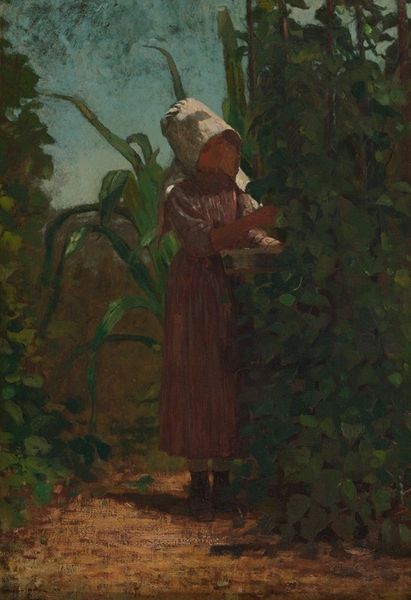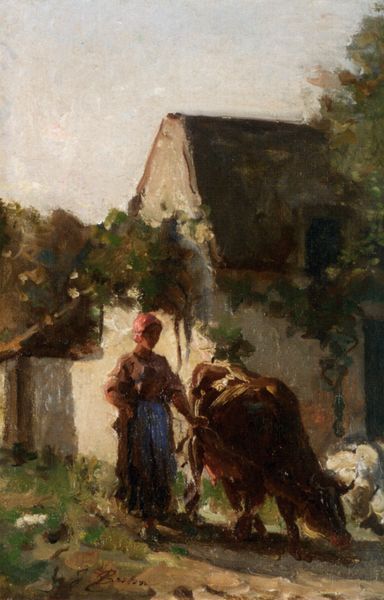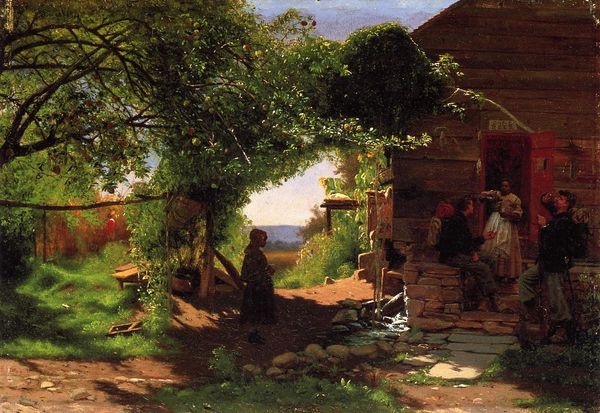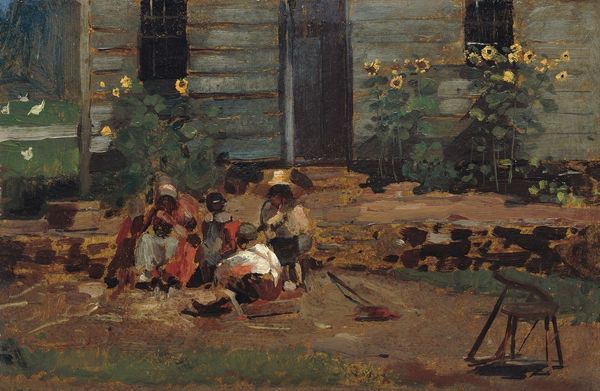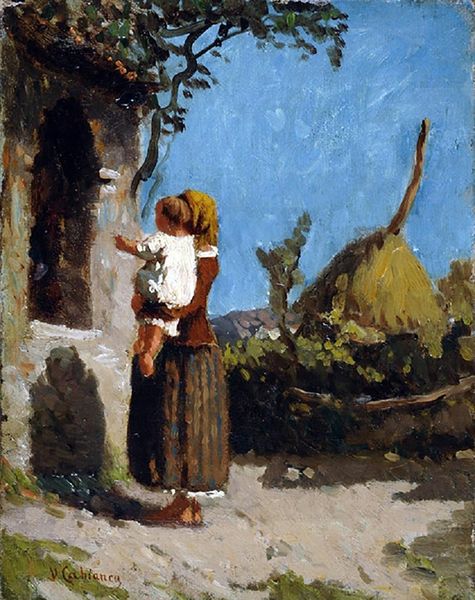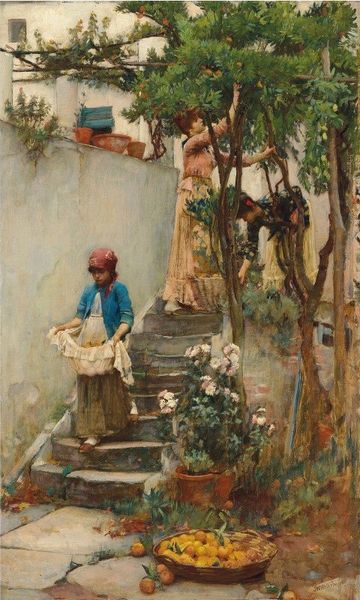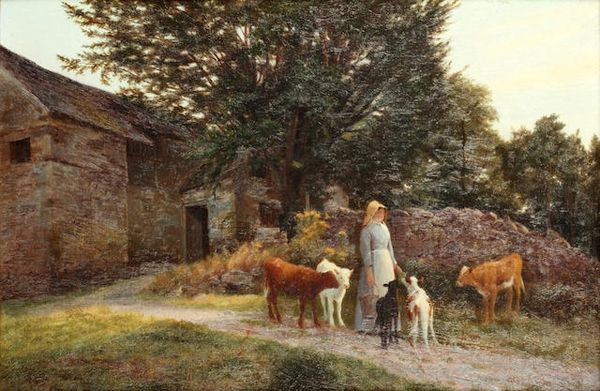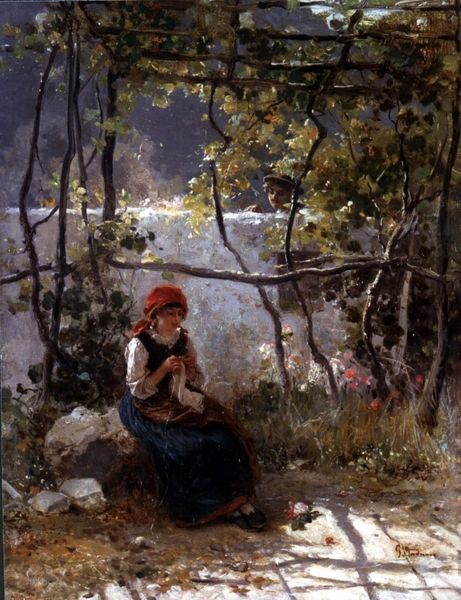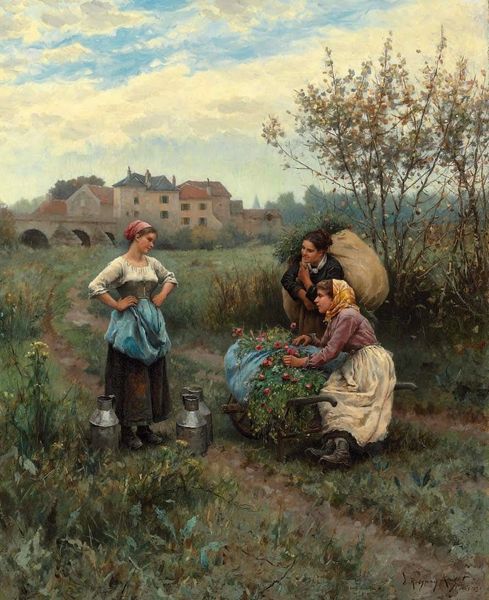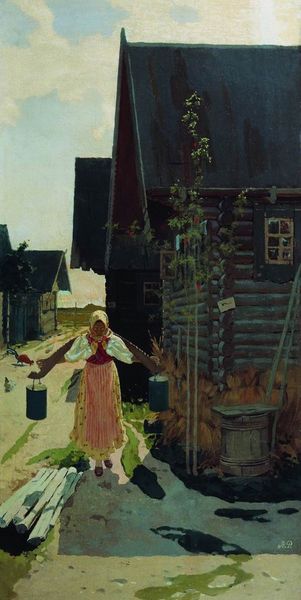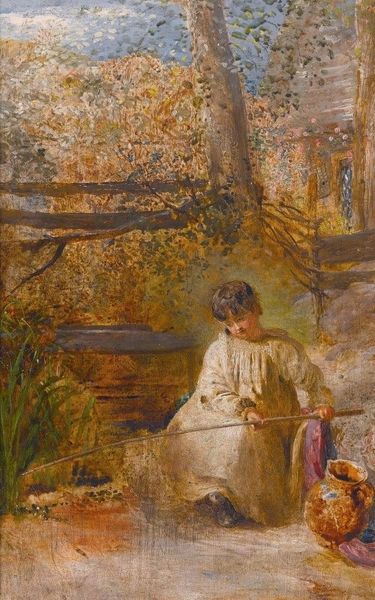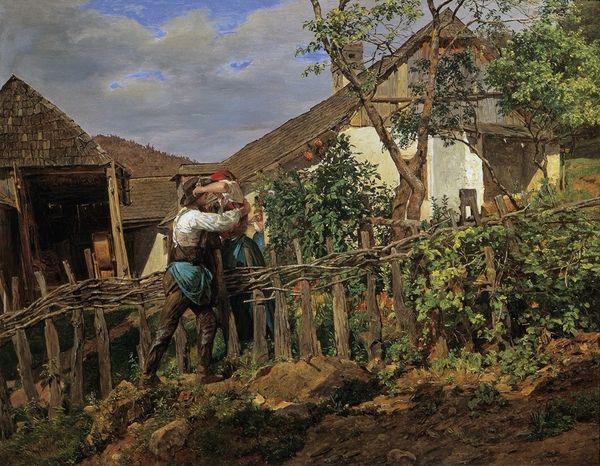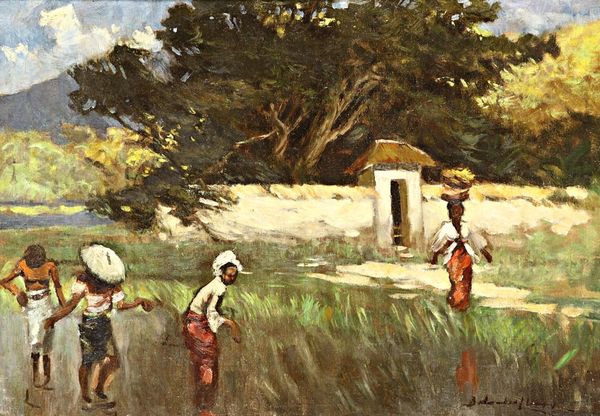
Copyright: Public domain
Curator: Thomas Anshutz's 1879 oil painting, "The Way They Live," currently at the Met, captures a poignant moment of rural life. The composition emphasizes the labor and community found within this humble setting. Editor: It's a very grounding image, isn't it? The muted tones, the rough texture of the cabin, and the stoic figures… there’s a weight to it. You can almost feel the humidity of that garden. Curator: Anshutz was associated with the realist movement and even the Hudson River School earlier in his career, a time when artists aimed to depict everyday life honestly, even the less picturesque aspects. Consider this piece in the context of post-Reconstruction America. What social dynamics might it be highlighting? Editor: Absolutely. The red headscarf on the working woman stands out vividly, doesn't it? Red often represents strength, resistance, maybe even a quiet defiance. Look at the young girl too, carrying what looks like a water jug; there's a sense of responsibility there, contributing to the whole. It also looks like one of the children behind her is learning, reading possibly, suggesting the cultivation of knowledge to overcome oppressive realities. Curator: Indeed. While appearing to be a simple genre scene, the piece certainly evokes the hardships, and the resilience, inherent to this specific community in 19th-century rural America. Anshutz was influenced by the industrialized world, particularly labor movements, as much as he tried to get into portraying rural daily life, but he doesn't shy away from the realities of poverty. The landscape becomes almost a character in itself, providing context, underscoring the laboriousness, the toils of daily living. Editor: There is this really interesting combination of hopefulness with these greens and yellows that surround the red of the scarf, even juxtaposing her face, and you feel like it might mean this new world that has its very firm feet on this place, this garden, will become stronger as the other realities become even harder to ignore, like the stonewall itself is splitting because the roof is literally splitting. It gives it depth that extends beyond being picturesque and leans into this tension of knowing but having the potential for tomorrow, just a little bit over. Curator: The way Anshutz layers meaning—between those formal artistic elements and socio-historical undercurrents is powerful, don't you think? Editor: Oh, undeniably. You peel back one layer of symbolism and uncover a whole other stratum of meaning below. This little garden plot is dense and heavy.
Comments
No comments
Be the first to comment and join the conversation on the ultimate creative platform.
